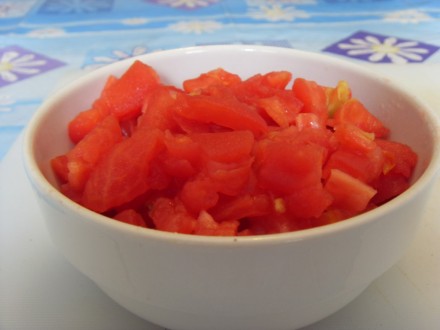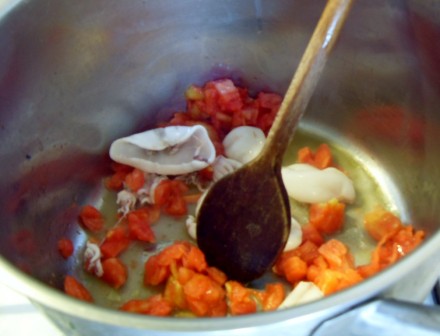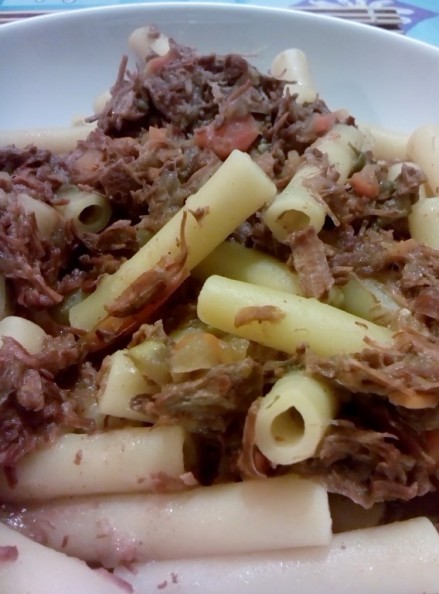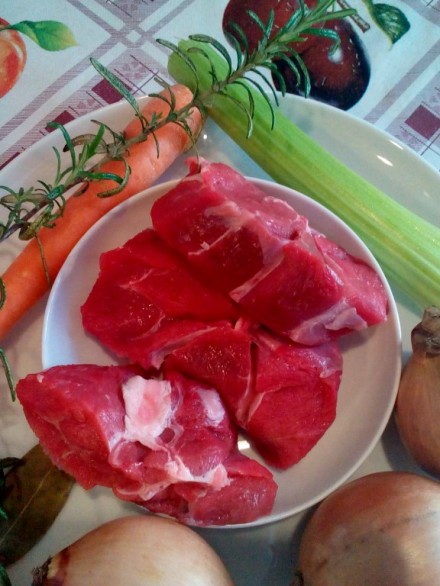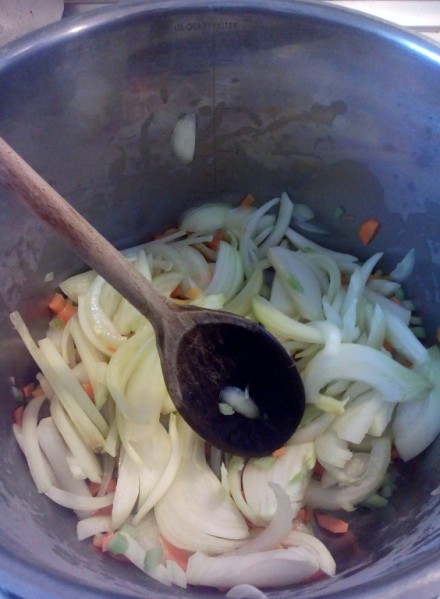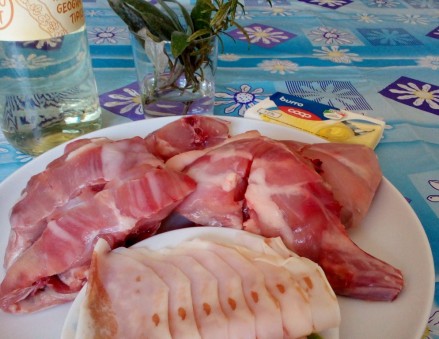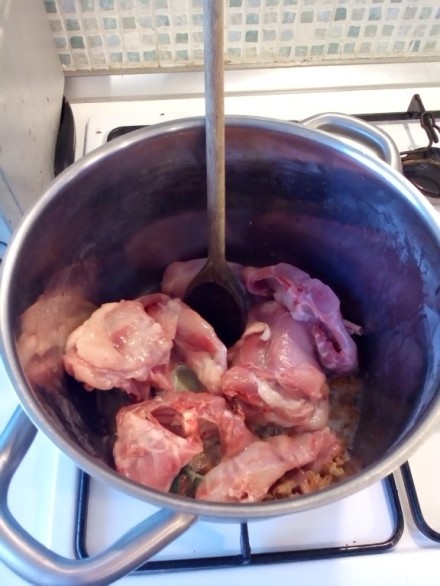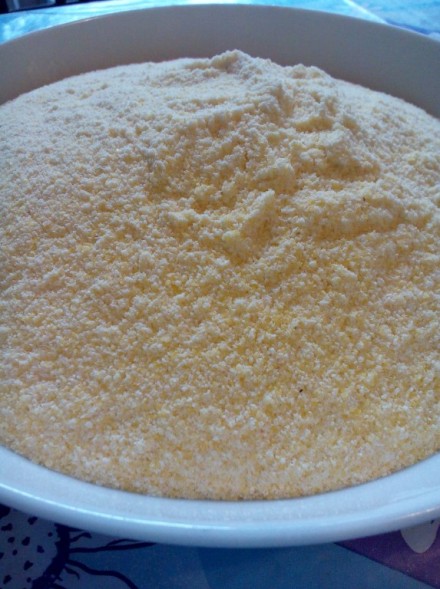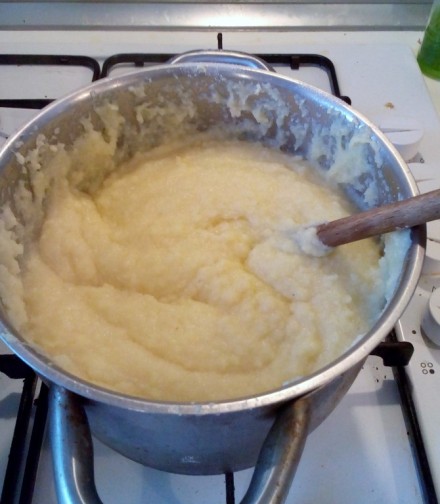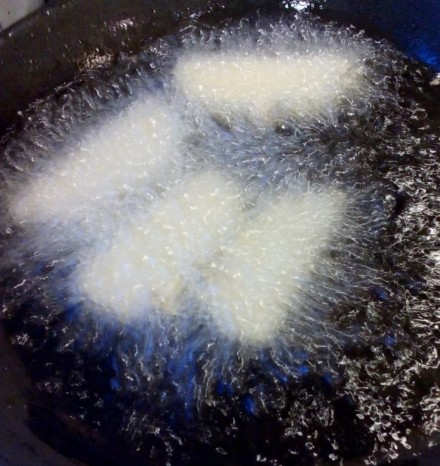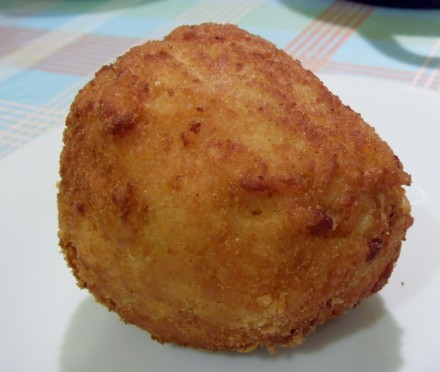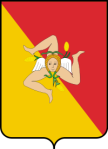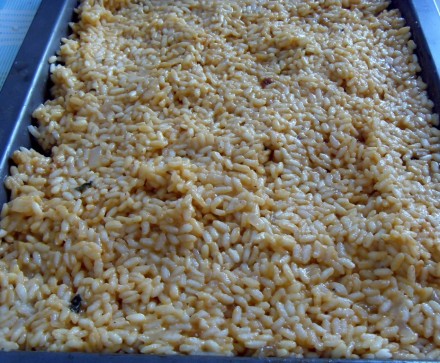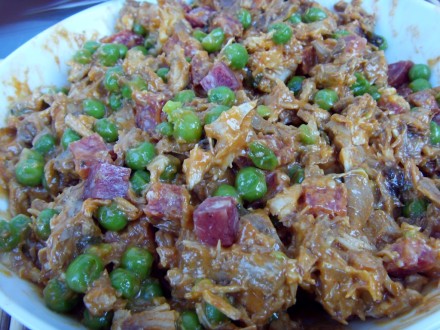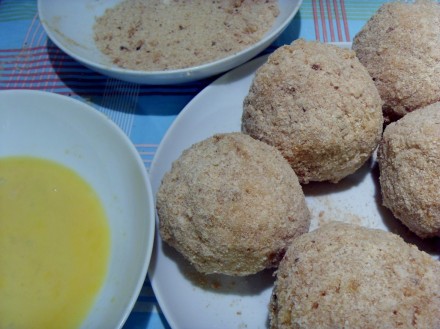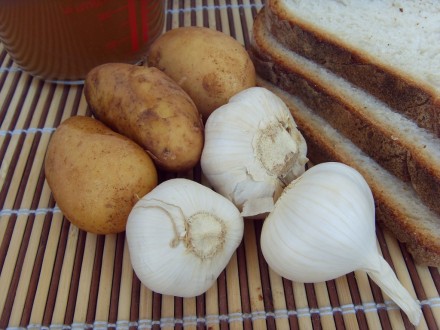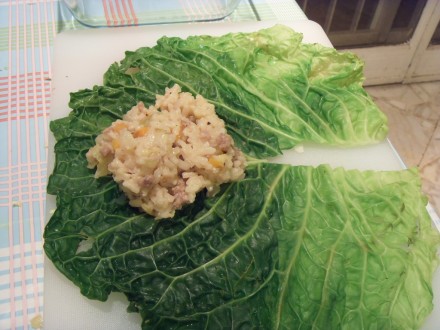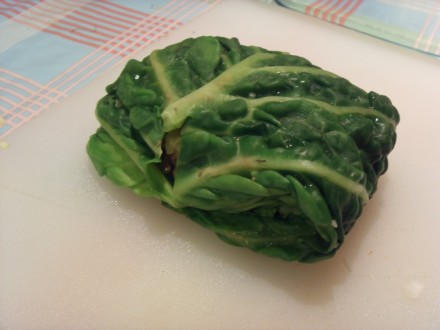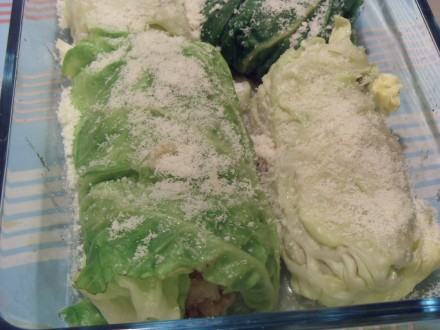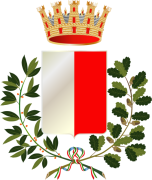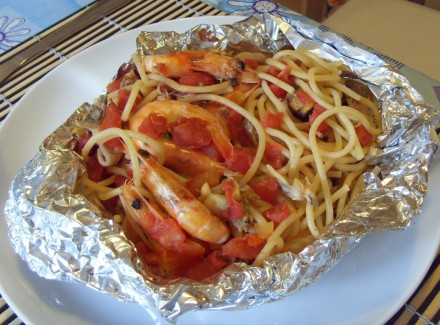
 From Puglia. This dish looks fairly impressive, but is in fact quite easy to do. Spaghetti or linguine is mixed with seafood, and baked in the oven. The pasta absorbs the flavours from the seafood and the sauce is concentrated wonderfully. I had this dish at a restaurant near here “Zia Teresa” in Torre a Mare a while back. They served it using foil packets, but some people use greaseproof paper. Make one large package, or as I prerfer, one package per person. The recipe is really just a guide. The seafood is different from chef to chef and from day to day, depending on what is available. Include some kind of mollusc, like mussels or clams, something from the squid family, like calamari or octopus and something from the prawn family like prawns, scampi and shrimps. Some people also include a little fish, about 200 g, such as red mullet, sea bream or bass. Serves 4.
From Puglia. This dish looks fairly impressive, but is in fact quite easy to do. Spaghetti or linguine is mixed with seafood, and baked in the oven. The pasta absorbs the flavours from the seafood and the sauce is concentrated wonderfully. I had this dish at a restaurant near here “Zia Teresa” in Torre a Mare a while back. They served it using foil packets, but some people use greaseproof paper. Make one large package, or as I prerfer, one package per person. The recipe is really just a guide. The seafood is different from chef to chef and from day to day, depending on what is available. Include some kind of mollusc, like mussels or clams, something from the squid family, like calamari or octopus and something from the prawn family like prawns, scampi and shrimps. Some people also include a little fish, about 200 g, such as red mullet, sea bream or bass. Serves 4.
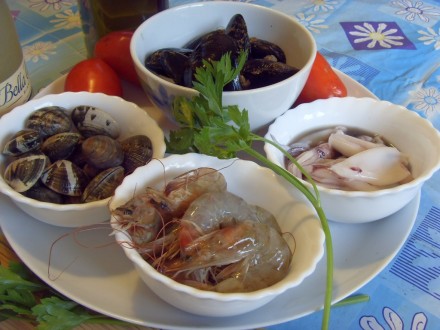
- 350 g spaghetti
- 3 cloves of garlic, peeled and bruised
- 1 kg of fresh tomatoes
- 200 g unpeeled raw prawns/shrimps
- 350 g clams (vongole veraci)
- 500 g mussels
- 200 g baby octopus or baby squid
- A large sprig of fresh flat-leaf parsley, chopped
- Olive oil
- 2 chillis (optional, use the chillis which you are used to. It is usually made quite mild here)
- Dry white wine
Wash the mussels and clams under cold running water and pull the beards off. Put them into a large pan along with a clove of garlic, the parsley and half a glass of wine. Put on a high heat until all the shellfish are open. Remove most of them from the shells (you leave a few whole for garnish, if you like) and reserve the cooking liquid, strained if need be.
Blanch the tomatoes for a few seconds in boiling water, and then peel and deseed them. Roughly chop.
Heat about 4 tablespoons of oil in a large pan with the remaining 2 cloves of garlic. When they have browned, remove them from the oil. Add the octopus or squid, and cook over a medium heat for about 5 minutes.
Add the tomatoes and cook for a further 5 minutes. Add the cooking liquid from the shell-fish and the chopped chillis (leave them whole if you want to remove them at the end of cooking) and cook for a further 5 minutes. Add the unpeeled prawns and cook for a further 5 minutes. If you’d prefer to peel the prawns you can, but you’ll be losing quite a lot of flavour.
Cook the pasta about half the time recommended time on the packet. Drain and mix with the sauce.
Use a large square of kitchen foil, or 4 smaller ones for individual portions. Bring all 4 sides up and pinch together the corners, so you have a sort of foil “basket”. Fill each pouch with the pasta and fold over the top to close. Dont close them too tightly, leave some room. Bake in an oven preheated to 200°c for about 10 minutes.
Unwrap the package or packages at the table and have some finger bowls and napkins handy.


